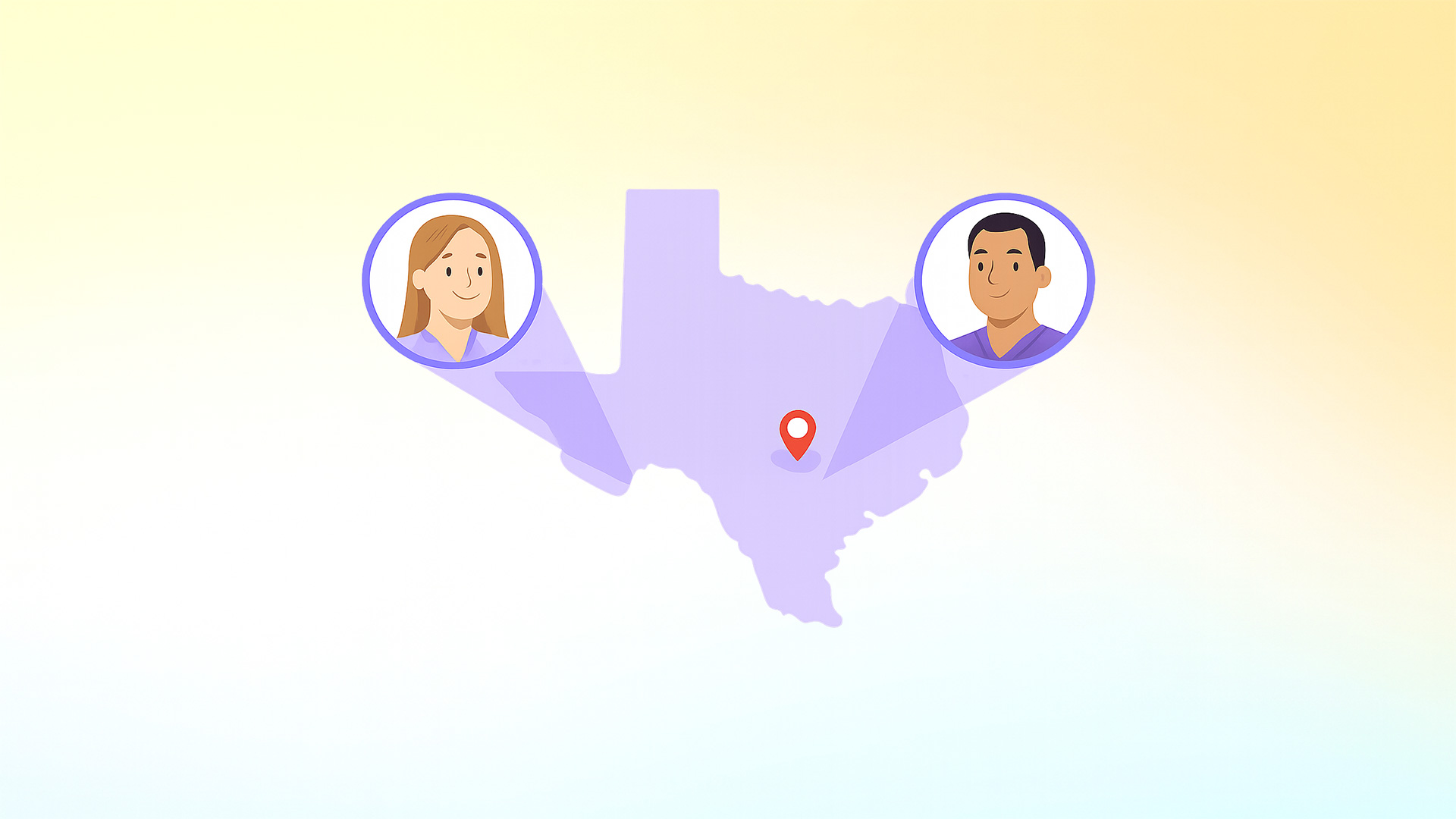At NPHub, we're tackling the NP preceptor shortage head-on with a two-pronged approach.
First, we focus on connecting available nurse practitioner preceptors with NP students who need them for their clinical rotations. Our goal isn't just to find any preceptor in your area; it's about ensuring successful clinical experiences that benefit both parties. We strive to create the perfect match between experienced nurse practitioner preceptors and eager students, setting the stage for fulfilling clinical hours and real-world practice.
However, our second initiative might be even more crucial: we're actively working to expand the pool of NP preceptors. We engage with seasoned nurse practitioners who could become potential preceptors, listening to their concerns and addressing their challenges. While many are enthusiastic about precepting and recognize its unique benefits, some still hesitate to take on this important role in nursing education.
This resistance prompts us to continually ask: what's missing in the current approach to NP preceptorship? How can we better support preceptors and nurse practitioner students to ensure a smooth, rewarding clinical rotation experience?
By focusing on these questions, we aim to alleviate the immediate shortage and create a sustainable solution for the future of nurse practitioner education and patient care.
Why is it Still So Difficult to Find Nurse Practitioner Preceptors?
Despite ongoing efforts, nurse practitioner students continue to face challenges in securing clinical rotations. Two primary factors contribute to this persistent NP preceptor shortage:
- A general scarcity of practicing nurse practitioners, which limits the pool of potential preceptors.
- Unaddressed barriers that discourage experienced nurse practitioners from taking on the role of clinical preceptor.
To better understand this issue, let's examine the benefits of becoming an NP preceptor. A 2015 study on barriers and incentives to precepting in nursing education revealed that most nurse practitioner preceptors valued the following advantages:
- Credits towards professional recertification
- Detailed program information
- Access to up-to-date clinical references
- Financial compensation
Many universities and preceptor matching services, including NPHub, now offer these incentives to attract potential preceptors. Some of these benefits have been standard practice for years in various specialties like family medicine, internal medicine, and women's health.
However, the persistent difficulty in finding NP preceptors for clinical sites suggests that these incentives alone may not be sufficient. To create a more robust preceptorship ecosystem, we need to look beyond traditional benefits and address the underlying challenges that deter nurse practitioners from guiding the next generation of healthcare providers.

Why Does the Nationwide Nurse Practitioner Preceptor Shortage Persist?
While incentives for NP preceptors exist, they're not uniformly available across all states. In some regions, financial compensation for preceptors is even considered illegal. This inconsistency suggests a need for standardized benefits to support nurse practitioner preceptors throughout the country.
However, we must question whether these benefits alone are enough to overcome the barriers to precepting. The same study that highlighted the desired incentives also revealed two major obstacles faced by potential preceptors: time constraints and productivity demands. These challenges in clinical practice aren't easily resolved by continuing education credits or financial compensation alone.
For nurse practitioner students seeking clinical rotations, these persistent barriers translate to fewer available preceptors and clinical sites. This shortage affects various specialties, including family practice, primary care, and urgent care settings.
To address the NP preceptor shortage effectively, we need to look beyond conventional benefits. Let's explore what experienced nurse practitioner preceptors themselves say about potential solutions:
- Improved support systems within clinical settings
- Recognition of precepting efforts in productivity metrics
- Streamlined administrative processes for taking on NP students
- Enhanced collaboration between NP programs and clinical sites
By addressing these concerns, we can create a more supportive environment for both NP preceptors and students, ultimately leading to more fulfilling clinical experiences and a stronger foundation for future nurse practitioners in patient care.
What keeps preceptors from becoming preceptors
A 2019 AANP Journal study on tax incentives for preceptors in Massachusetts shed light on key factors contributing to the NP preceptor shortage. The research revealed that clinical rotations for nurse practitioner students often face delays due to institutional issues, preceptor needs, or clinical site logistics. These challenges include:
- Complex clearance paperwork and preceptor affiliation processes
- Unexpected cancellations by committed preceptors
- Reluctance to take on NP students without financial compensation
- Difficulties adapting to new Electronic Health Record (EHR) systems
- Time constraints, scheduling conflicts, and limited physical space in clinical settings
- Tensions between clinical sites and academic institutions
While this study proposed tax incentives as a potential solution, a 2020 Journal of Nurse Practitioners study on clinical teaching offered another crucial perspective: the preparedness of nurse practitioners to serve as preceptors. This research, which surveyed 195 NPs at a national conference, revealed:
- Only 23% of nurse practitioners had participated in formal preceptor education programs
- 63% identified lack of preceptor education as the primary barrier to taking on NP students
- Time constraints and perceived costs ranked as the second and third most significant obstacles
- 65% of respondents felt unprepared to teach effectively
Despite these challenges, there's a silver lining: 58% of preceptors reported a clear understanding of educational objectives when working with nurse practitioner students. This suggests that the main hurdle lies not in understanding goals but in developing effective teaching methods for clinical skills and patient care.
These insights highlight the complexity of the NP preceptor shortage. While financial incentives like tax credits may help, addressing the educational needs of potential preceptors is equally crucial. By focusing on comprehensive preceptor training programs, we can better equip experienced nurse practitioners to guide NP students through their clinical rotations in various specialties, from family medicine to women's health and pediatrics.
As we explore current initiatives to tackle this issue, it's clear that a multifaceted approach is necessary to create a robust network of NP preceptors and ensure high-quality clinical experiences for future nurse practitioners.
How People Are Trying to Solve the NP Preceptor Shortage Today
Tax incentives have been a popular idea for a few years now, and it seems to be a growing trend in post-pandemic times.
In Massachusetts, they considered that tax incentives might be a good solution to the NP preceptor shortage, “as evidenced by the current incentives in place” for MDs, and similar incentives for PAs.
Here's what every state is doing about tax incentives:
States with pending or rejected tax credit proposals for NP preceptors:
Alabama, Arizona, Connecticut, Idaho, Kentucky, Rhode Island, New York, Louisiana, Maine, Massachusetts, Minnesota, New Mexico, North Carolina, North Dakota, Oklahoma, Oregon, Virginia.
States with active tax credits for NP preceptors by law:
Georgia, California, Colorado, Maryland, Hawaii, South Carolina.
States without official tax incentive proposals or widespread discussion (right now):
Alaska, Arkansas, Delaware, Florida, Illinois, Indiana, Iowa, Kansas, Michigan, Mississippi, Missouri, Montana, Nebraska, Nevada, New Hampshire, New Jersey, Ohio, Pennsylvania, South Dakota, Tennessee, Texas, Utah, Vermont, Washington, West Virginia, Wisconsin, Wyoming.
You can see how tax incentives, even though people like them, are not really that widespread.
Also, many states do have tax proposals to combat the NP preceptor shortage, but we don't count them because they only offer those benefits to physicians. They are on list number three.
Most NP organizations have their own ideas on how to take down the barriers to precepting. Many of them don't have anything to do with taxes.
However, tax incentives deserve their own section on this post, because they're the first thing that comes up on this subject.

Proposals to solve this issue that don't include taxes
There's little information on other proposals, at least on the surface, when you look this up on Google. It requires more research, which is not a bad thing, but does tell us something about how people see the NP preceptor shortage.
We can mention that Alabama recently approved legislation to create a Preceptor Awareness Campaign. Ohio has a private program that pays preceptors for precepting.
The 2019 AANP Journal study, see two sections above, also mentioned that Iowa was considering things like loan forgiveness and scholarships.
You can find examples of beneficial programs and resources for preceptors in almost every state. So there's no shortage of ideas. All of these things make a preceptorship more appealing.
However, how about making preceptorships easier? More effective? We just read that the NP preceptor shortage is because of time constraints, problems with paperwork, institutional conflicts… Who's paying attention to that?
A Holistic Approach to Solving the NP Preceptor Shortage

At NPHub, our mission goes beyond simply connecting NP students with preceptors; we're committed to fostering a new generation of nurse practitioner preceptors.
We recognize that the NP preceptor shortage is a complex, long-standing issue in healthcare education. While there's no quick fix, we believe in pursuing a comprehensive solution that goes beyond financial incentives.
Our vision for addressing this challenge involves creating an environment where becoming an NP preceptor is not just rewarding but also seamless and engaging. Imagine a world where:
- Experienced nurse practitioners are eager to precept, not just for monetary benefits or tax breaks, but because the process is streamlined and well-supported.
- Preceptor matching services, like our online platform, not only connect you with ideal NP students but also provide a robust support system throughout the clinical rotation.
- Administrative hurdles are minimized with efficient paperwork processes and strong institutional backing.
- Comprehensive preceptor education programs prepare you for the teaching aspects of the role, enhancing your skills in clinical instruction and mentorship.
- A clear structure is in place, providing a conducive environment for both teaching and learning in various specialties like family medicine, primary care, and women's health.
This approach aims to create a fulfilling clinical experience for both preceptors and nurse practitioner students. By shifting focus from purely financial solutions to systemic improvements, we can build a sustainable model for NP preceptorship.
Achieving this vision requires institutional-level changes and a reimagining of how we approach clinical education in nurse practitioner programs. It's about creating a supportive ecosystem that values the crucial role of NP preceptors in shaping the future of healthcare.
***
We'll leave you with that idea, for now. We'll talk more about that in future posts.
If you want to become a preceptor with NPHub, check out our preceptor page. Also, what do you think about the NP preceptor shortage? Reach out on social media and let us know! Have you precepted NP students? Do you want to precept? We want to hear from you.
Find a preceptor who cares with NPHub
Book a rotation.webp)








.webp)


.webp)



.webp)